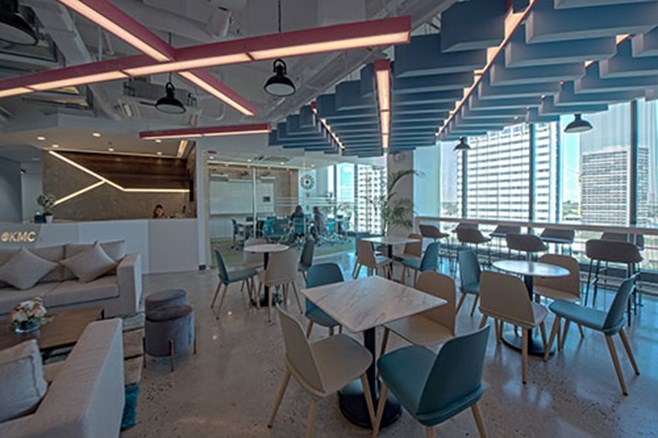How the Coworking Industry is currently doing in the Pandemic
9/30/2020 | By Marella Gimenez

As companies around the world are figuring out how to safely resume business operations in the office, alternative workspaces also become part of the conversation on whether there is a definitive green light for them to return. Just like any other business that relies on consumers during the pandemic, the coworking industry has taken a hit with some operators closing up shop or operating at a loss. In a new report titled “Coworking Spaces Global Market Report 2020-30: COVID-19 Growth and Change”, its stated that the global industry for coworking spaces is predicted to experience lower growth rates, earning from $9.27 billion in 2019 to $8.24 billion in 2020. This is largely caused by the economic slowdown from the pandemic and businesses making the switch to remote working that the industry has encountered a 12.9% decline.
However, coworking spaces are projected to make a recovery and earn up to $11.52 billion dollars in 2023 by compound annual growth rate. Several factors are also put into careful consideration before the industry tries to get back up on its feet, with many employees still working from home, the commercial real estate industry as a whole has seen a big increase in vacancies and footfalls.
How the Pandemic has Transformed Spaces
With businesses adapting to the new normal, coworking spaces have evolved as well to respond to the new needs and demands of the public. A change in office layout to abide by social distancing protocols, heightened cleaning measures, no walk-ins, and no unnecessary guests policies have been implemented to crowd control the workspace and easily keep track of the people that are in it. Virtual coworking has also been a new trend that has popped up due to the pandemic’s stay-at-home orders, providing access to online channels, virtual happy hours, and replacing community events with online events and webinars.
Flexible Workspace as a Point B

There is still some uncertainty about long-term office space needs but with this comes the flexibility of workspaces such as coworking space that addresses a few of these apprehensions. With a majority of businesses looking into downsizing plans and ways they can effectively cut costs, coworking spaces come as a welcome middle ground because of their short-term leasing options and accessibility for their employees. Moving forward, more and more companies are seeking other flexible and adaptable workspaces that help decongest their headquarters for social distancing protocols and affordable office space alternatives that have no long-term commitments.
A New Type of Coworker

Coworking spaces are also seen to be tapping into a new demographic and encountering new types of coworkers that are visiting their spaces to get work done. With remote learning also posing the same problems for productivity that work-from-home employees have, these spaces offer a safe space for students to learn in a community-based environment that is collaborative and distraction-free. Studies support that coworking spaces are great places for learning, largely because they encourage collaboration as well as help individuals stay more engaged with their work because they feel less isolated.
According to a study by Small Business Labs, 80% of coworking members report turning to each other for guidance. This factor will become even more needed in the months ahead as people will need places they can go to quickly and effectively learn new skills, to both upskill as an employee or learn as a student. After millions of people were forced to make the switch to working from home, the coworking industry can now weigh the pros and cons, as well as anticipate what members need from a space-as-a-service organization.




